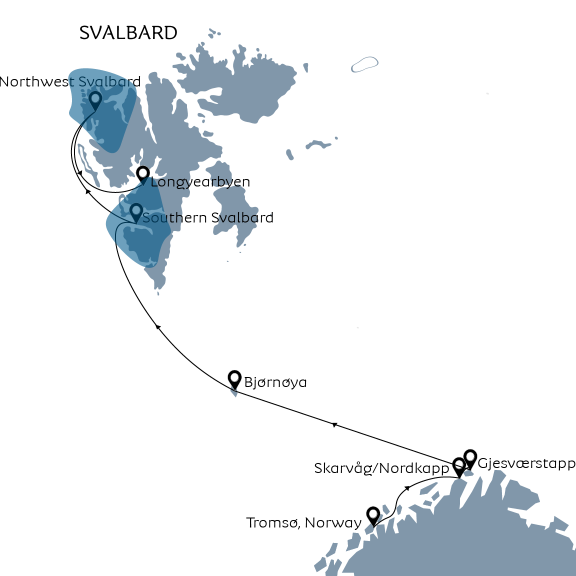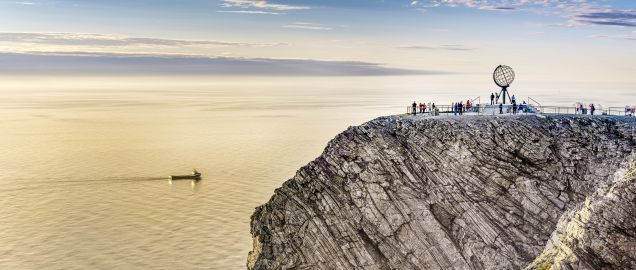Arctic Odyssey - from Norway to Svalbard
Next DepartureMay. 30, 2025See all departures |
Duration8 daysSee the itinerary |
Activities
, Boat, Bus Excursion, Lectures, Wildlife observations, Zodiac |
Embark on an exceptional journey from Norway's Arctic capital of Tromsø, and leave Europe behind as you sail to Svalbard, the realm of the polar bear!
Embark on a thrilling journey into the wilds of northern Europe, sailing from mainland Norway to the high Arctic islands of Svalbard.
This exciting voyage begins in the Captial of the Arctic, the Norwegian city of Tromsø. Bathed in the midnight sun throughout the brief Arctic summer, Tromsø is a vibrant metropolis in miniature, and has been the gateway to the Scandinavian Arctic for generations of explorers. Marvel at the city's stunning natural setting nestled deep in the calm fjords of Troms County, explore the city's bustling high street, lined with boutique shops, cozy cafes and historical gems, and explore the city's many monuments and landmarks such as the Arctic Cathedral and the Polar Museum.
From Tromsø, we will sail to Norway's northernmost point, where we will spend time searching for wildife at the islands of Gjesværstappan, and stand at the end of the European mainland at legendary Nordkapp. Leaving civilisation behind, we will venture even further north to Bjørnøya (Bear Island), a lonely isle between Svalbard and mainland Norway, home to some of the most spectacular bird colonies on Earth.
Our next stop will be the majestic islands of Svalbard, the kingdom of the polar bear. Experience jaw-dropping natural beauty, keep watch for charismatic Arctic wildlife, and discover the fascinating history of this incredible archipelago. Exploring on land, we will aim to experience the Arctic up close and personal, while our fleet of Zodiacs also allow us to explore on the water.
During the short summer, wildlife such as reindeer and polar foxes are busy amassing energy for the icy polar winter. The cliffs shimmer with life as every surface is populated with countless birds, and in a few months, a new generation of Arctic sea birds are ready to leave their nests. Arctic guillemots, black guillemots and razorbills can be observed fishing in our ship's wake. On the sandy shores, huge walruses enjoy the short Arctic summer, and many whales and seals forage along the edge of the pack ice and the coasts.
For those who wish to extend their time in the Arctic, new for 2025, Albatros Expeditions now offer an exciting new pre-cruise land program in Tromsø! Space is limited, so book early to avoid disappointment!
Join a true Arctic expedition: experience with us!
Please note that exact landing sites in Svalbard will be determined by wind, sea and ice conditions.
Facts about Arctic Odyssey - from Norway to Svalbard
- Arctic
- Svalbard
- Norway

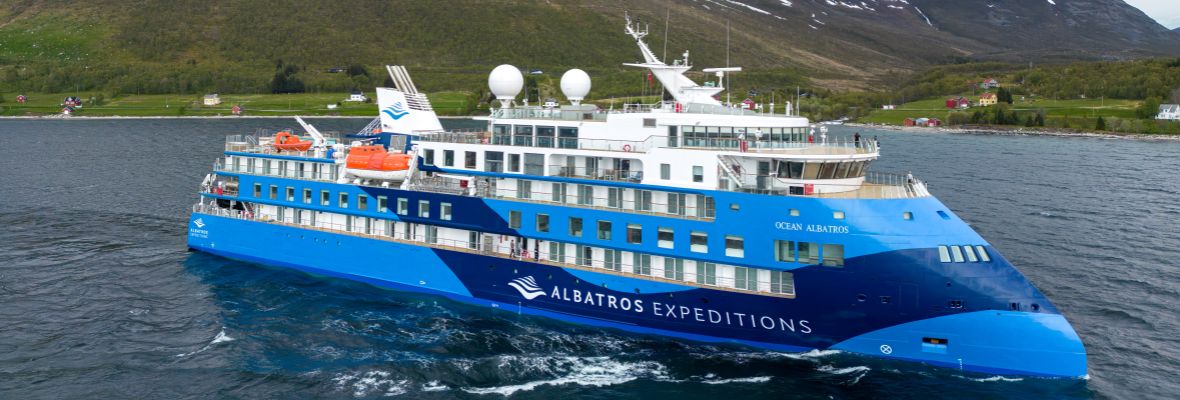
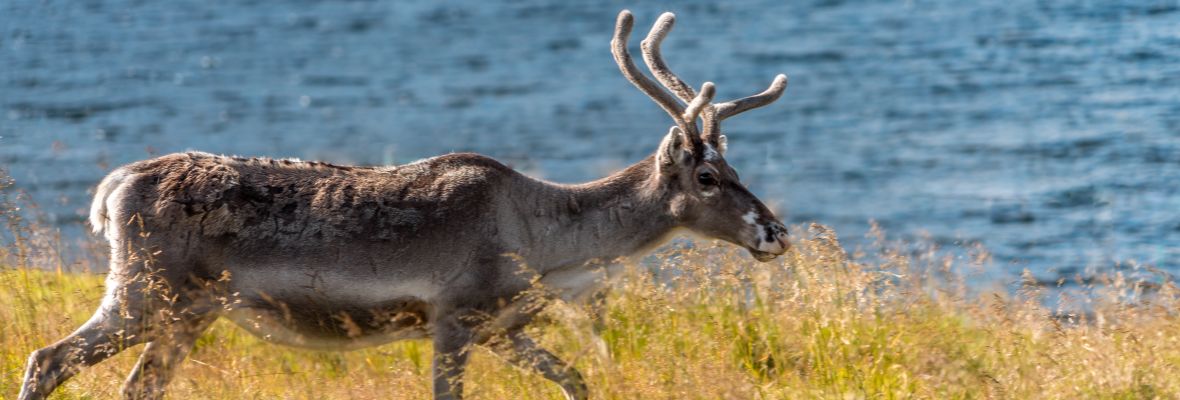
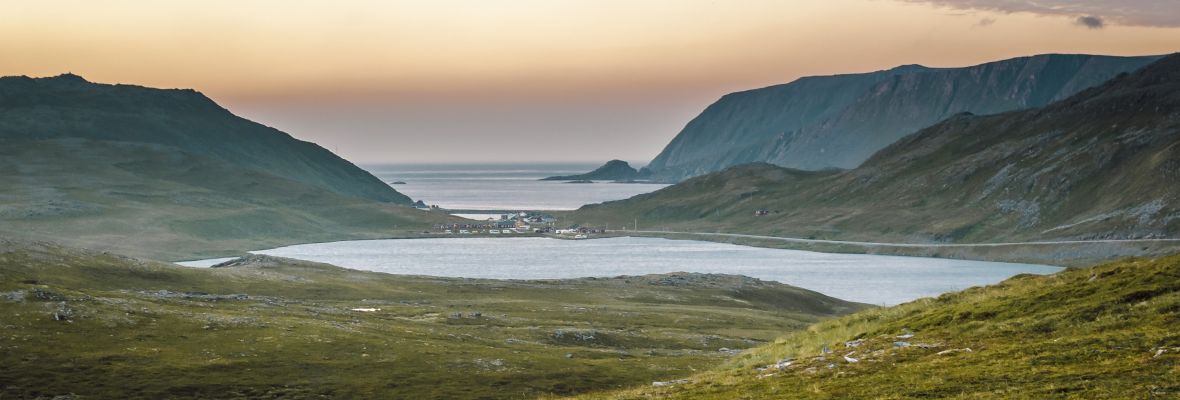
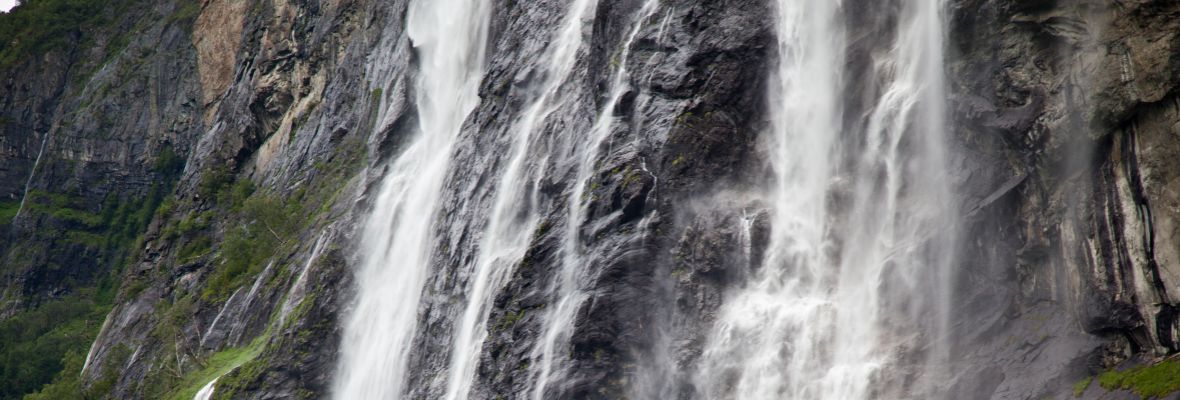


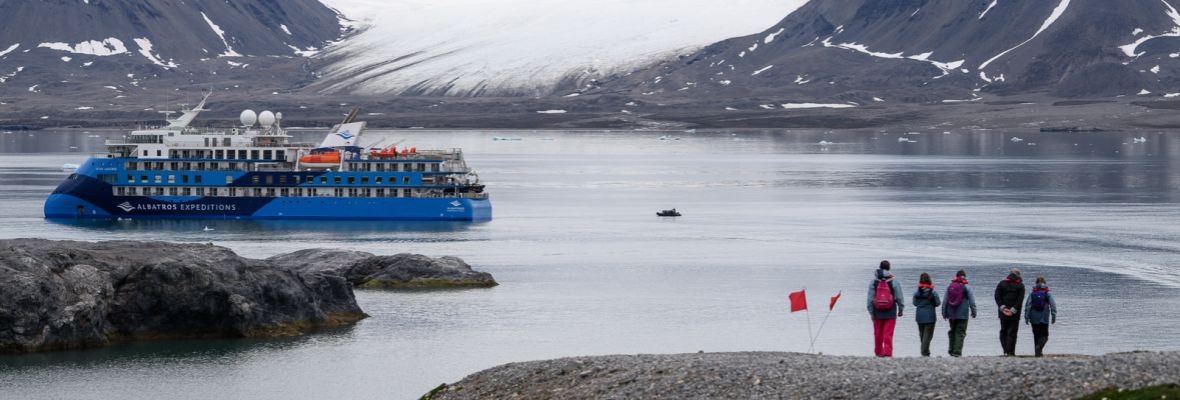
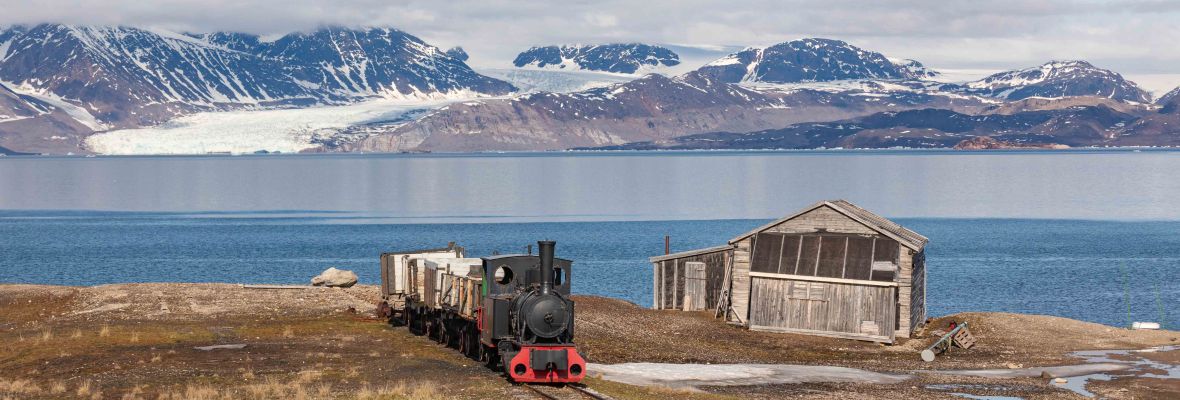

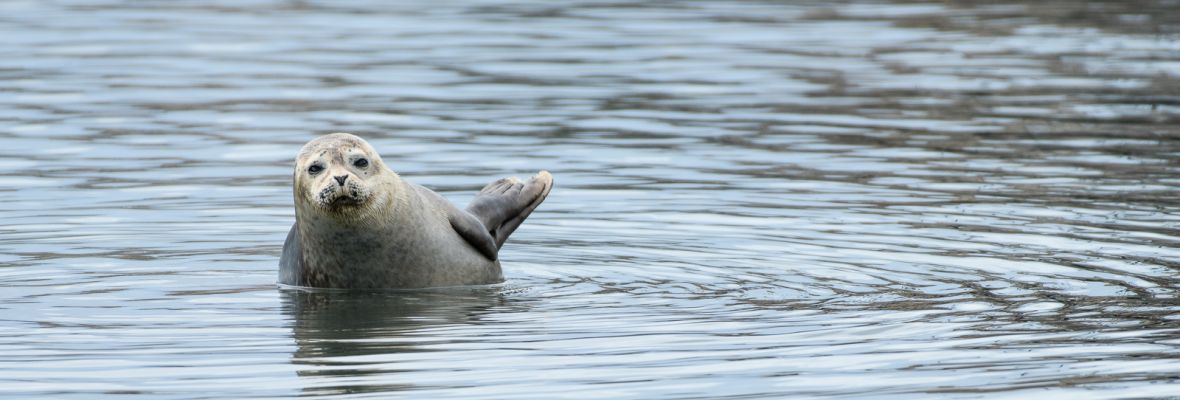
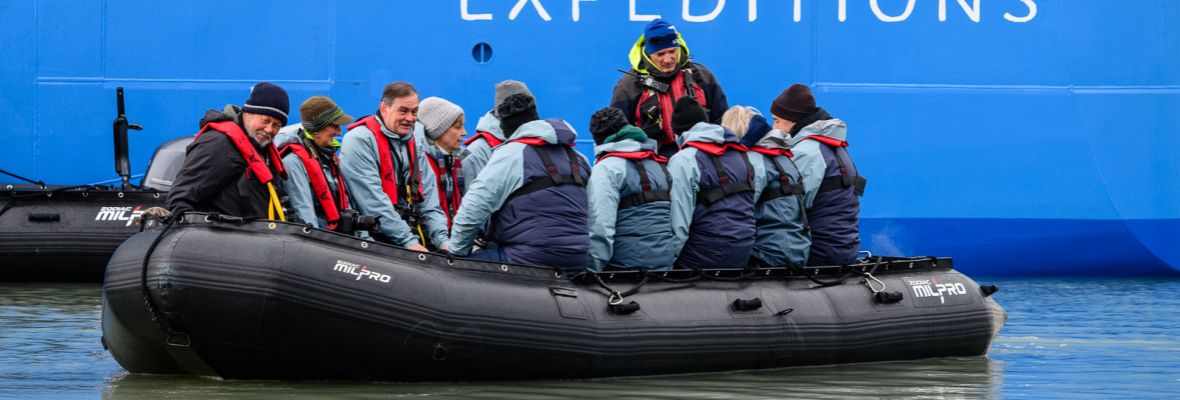
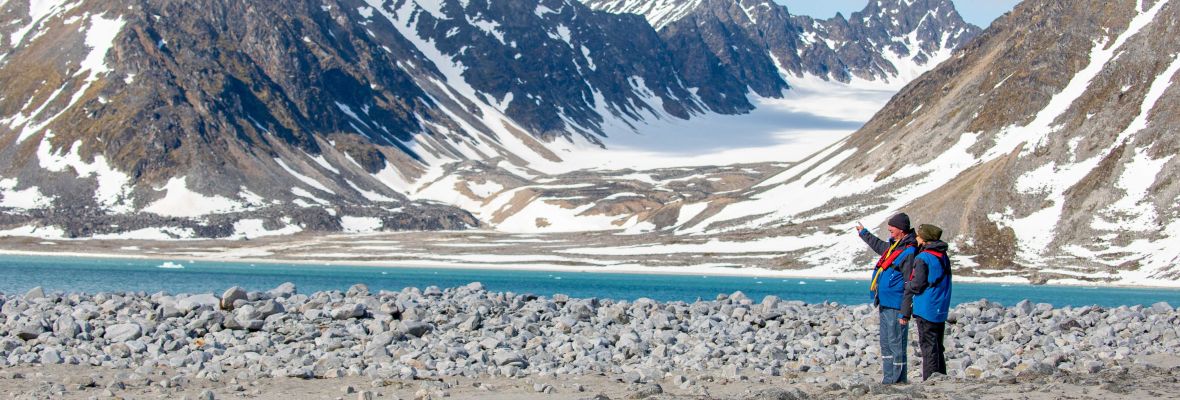
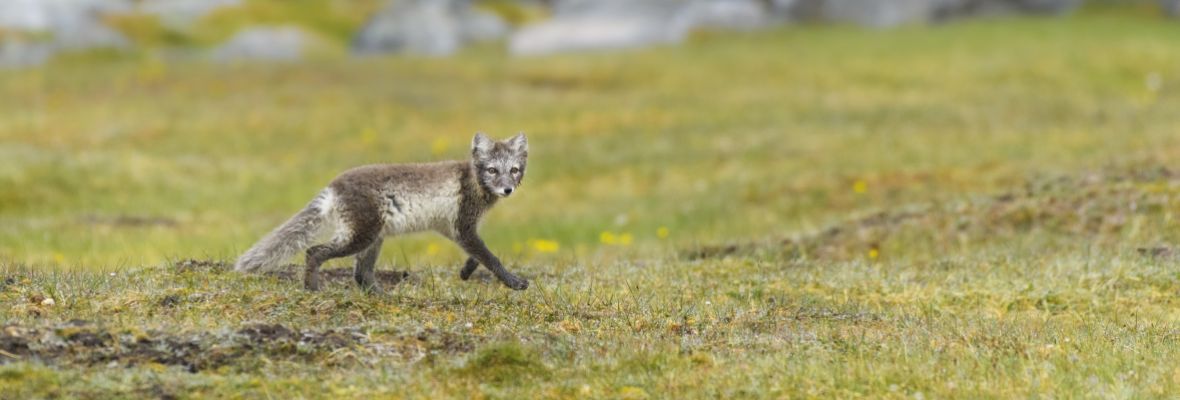
Day 1
Tromsø, Norway - Embarkation
Arrive in Tromsø, the majestic 'Capital of the Arctic'. Situated deep in the maze of fjords for which Norway is famous, Tromsø sits on an island surrounded by steep mountains and plunging seas.
Known worldwide as Norway's Arctic capital, Tromsø is the largest city in the European Arctic with around 80,000 residents, and is the hub for transport, industry and tourism throughout the region. Visitors from all ober the world come to experience this vibrant city, as well as explore the stunning nature which surrounds it, or to simply bask in the midnight summer sun.
Ocean Albatros awaits in the calm waters of the city harbour, ready to take our guests on a spectacular journey, leaving Europe behind and heading into the wild north beyond. After the mandatory safety drill, relax on the outer decks sipping a carefully crafted cocktail as Ocean Albatros sets sail through the fjords of northern Norway.
Day 2
Gjesværstappan, Skarsvåg and the North Cape
In the early morning of the first full day of our expedition, we will arrive at Gjesværstappan, a maze of rugged islands and skerries off the coast of the small village of Gjesvær. These islands were designated a nature reserve in 1983, and exploring on the nearby waters cleary shows why! These islands hold an incredible amount of life, with vast colonies of kittiwakes, guillemots, razorbills, puffins and gannets all nesting in the area - one of Norway's greatest natural wonders!
Ocean Albatros will reposition over lunchtime to the tiny village of Skarsvåg. Skarsvåg holds the distinction of being the most northerly fishing village in the world, and many residents work harvesting the rich chilly waters at the top of Scandinavia. From Skarsvåg, we will offer an optional excursion to Nordkapp, the monument which marks the northernmost tip of mainland Norway and the European continent (charge applies - see below for further details on this excursion). This famed landmark beckons us to the next part of our journey, as we leave civilisation behind in the evening, and strike out towards the wild Arctic islands of Svalbard.
Day 3
Bjørnøya/Bear Island
Situated in the middle of the Barents Sea between northern Norway and southern Svalbard lies Bjønøya, known in English as Bear Island. This rugged island marks the start of the High Arctic, as the peaks of the island loom on the horizon.
Small, isolated and rarely visited, Bear Island was once heavily exploited by whalers and sealers, who flocked to the island from across Europe to harvest oil-bearing marine mammals. Thankfully, the island and surrounding waters are now protected as a nature reserve, and the island is returning to natural abundance. Despite the name, polar bears are almost unknown here, but whales and seals are common in these rich waters, and the steep cliffs of the isalnd are home to literally millions of seabirds. Guillemots, razorbills, puffins and gannets all crowd for space on tiny rock ledges, while hungry gulls and skuas cruise overhead in a never-ending search for prey.
If conditions permit, we will aim to offer a Zodiac cruise with our expert expedition team to experience the incredible wildife of this remote island - a true bucket-list experience!
Day 4
Southwest Svalbard
The southwest coast of Svalbard is washed by warmer water coming up through the Atlantic, so winter ice generally retreats first from this reagion. This allows us to enter the southern fjords of the area, even at the start of the summer - easily some of the most spectacular regions of this stunning archipelago. Throughout this maze of fjords and islands, birds cluster together on high cliffs and reindeer graze on the fertile slopes below, while icebergs drift by from the various large glaciers in the area. Tiny calico snow buntings flit between crags, while perfectly camouflaged purple sandpipers scamper along the shore. Look higher up on the vegetated slopes, and there - greyish white 'boulders' move and resolve themselves into sheep-sized reindeer: the unique subspecies native to Svalbard. A flash of bluish-black, and the screeches of nearby birds herald the arrival of the Arctic fox, the only native land predator on Svalbard (the polar bear being classified as a marine mammal).
The mountaintops are most often covered by dense clouds and the East-Spitsbergen current often leads pack ice into the mouths of the fjords. With a huge variety of landing sites to explore, this region is without doubt one of the most exciting and diverse regions of Svallbard! Options to explore in the area include the huge bird cliffs of Alkhjornet and Vårsolbukta, and the historical sites of Calypsobyen and Bambsebu, where prospectors, trappers and a range of other adventurers attempted to make their fortunes.
Days 5-7
Northwest Svalbard
One of the largest protected wilderness areas in Europe, North West Svalbard was declared a national park in 1973. The area is famed for its history, which documents some of the earliest human arrivals on Svalbard. While Norse explorers may have sighted these icy shores during the Viking Age, the first definite arrival was the expedition of William Barents, the legendary Dutch explorer for whom the Barents Sea is named. While now protected from human distruption, when Barents arrived in 1596, he noted the vast numbers of whales and seals which were soon prey to English and Dutch whalers, who arrived within a decade of Barents to pillage the area's wildlife. The area occupies the triple point between land, sea and ice, and as such was the perfect location from which to harvest the gentle giants of the oceans. Sites used to dismember whale carcasses and render them for their precious oil include the Dutch settlement of Smeerenburg, where the remains of 16th Century blubber ovens and building foundations can still be seen. Other sites such as nearby Ytre Norskøya record the darker side of this industrialised slaughter, where hundreds of young men who hoped to make their fortunes are buried thousands of miles from home.
Today, all that remains from this period of history are bones and the scant remnants of human habitation. Slowly reclaimed by creeping Arctic nature, the region is now a nature lovers paradise. Tiny Arctic poppies and purple saxifrage defy the brutal conditions to flower in the brief summer, while geese, eider ducks and other seabirds return to the island to raise their young. Walrus can be found hauled out on beaches, and we must always be on careful lookout for wandering polar bears in this now again wild region.
A haven of wildlife, fascinating history and jaw-dropping scenery, northwest Svalbard is surely one of the most spectacular areas of the Arctic, if not the world!
Day 8
Longyearbyen, Svalbard - Disembarkation
On the final morning of our expedition, we arrive in Longyearbyen, Svalbard - the world's northernmost... everything! This remarkable little city is not only the northernmost town in the world (if one excludes the tiny research community of Ny-Ålesund, slightly further north on Svalbard), but also hosts the world's northernmost civilian airport, schools, bank and supermarket.
The town's rugged frontier edge belies a core of warm Nordic hospitality and coziness, with comfy cafes, excellent restaurants and boutique shops all within walking distance. Even this small town will feel like a metropolis after days of isolation in the wilderness of the Arctic!
After enjoying exploring Longyearbyen and a fond farewell to the crew and fellow guests of Ocean Albatros, guest will be transported to Svalbard Airport to flyy back to the Norwegian mainland- with memories to last a lifetime.
Inclusions
- 8-day/7-night cruise on Ocean Albatros in a shared outside double room with a private bathroom in the category chosen
- Local transport in Longyearbyen on day 8
- English-speaking expedition staff
- Guided walks with the expedition team
- Nature hikes and Zodiac cruises per itinerary
- Information briefings and lectures by the expedition team
- Full board on the ship
- Dinner drink package
- Free coffee, tea, and afternoon snacks on the ship
- Welcome and farewell cocktails
- Taxes, tariffs, and landing fees
- Digital visual journal link after the voyage, including voyage log, gallery, species list, and more
Exclusions
- Extra excursions and activities not mentioned in the itinerary
- Single room supplement and cabin upgrades
- Meals not on board the ship
- Beverages (other than coffee and tea and dinner-drink package)
- Tips for the crew (we recommend USD 16 per person per day)
- Personal expenses
- Travel, cancellation, and senior insurance
- Anything not mentioned under ’Inclusions’
Leaving Tromsø, your expedition vessel will proceed north, reaching Gjesværstappan early in the morning. During lunchtime, the Ocean Albatros will reposition to the small village of Skarsvåg. From there, our vessel will continue onward into Svalbard to explore the unknown. The goal for the days spent exploring in Svalbard is to offer activities which will allow everyone to explore off the ship as much as possible (weather permitting). Weather dependent, we will try to offer two activities per day, usually either a landing or a Zodiac cruise.
Typically, there will be a morning activity after breakfast and an afternoon activity after lunch. We always try our hardest to meet this expectation, but because weather in the Arctic can be extremely unpredictable, we ask everyone to be mindful of our remote location and thank everyone in advance for their flexibility. Activities we offer include landings, Zodiac cruises and ship cruises. Regulations in Svalbard limit the number of people ashore at any time, so we will usually aim to offer a Zodiac cruise while our first group of guests are ashore, and reverse this for the second group ashore to maximise exploration time. No matter the day’s planned activities, the onboard Expedition Team and Expedition Leader will work as hard as possible in conjunction with the Captain and Crew to maximize exploration opportunities.
A “typical” expedition day may look like this (subject to weather and sea conditions and sailing schedule):
06:45: Wake-up call
07:00-08:00: Breakfast
08:30-11:30: Morning activity - Landing and Zodiac Cruise
12:30-13:30: Lunch
14:30-17:30: Afternoon Activity - Landing and Zodiac Cruise
18:30-19:30: Evening Recap with Expedition Team
19:30: Dinner
Landings are a great opportunity to stretch your legs and set foot on shore to visit the wildlife colonies, historical sites, and dramatic landscapes of Svalbard. Our experienced Expedition Team will be on shore to help you spot any wildlife, historical remains and geological and biological features, as well as keep our guests safe on shore from any potential hazards.
Remember that Svalbard holds a significant population of polar bears; while encounters are rare, these large wild animals can be dangerous. For that reason, when ashore in Svalbard our specially trained staff always prioritise the safety of our guests, and freedom to roam and hike in the area may be limited. We remind all visitors that this is for their own safety, and the safety of polar bears on Svalbard.
Some sites do not offer landing opportunities, but are locations where exploring on the water offers the best opportunities for sightseeing, wildlife and photography. These Zodiac cruise sites are often known for their concentration of ice, wildlife and even historical landmarks such as whaling stations, where our fleet of Zodiacs offer the best vantage point. This would be the only scenario you may have to wait on the ship (other than in adverse weather conditions), but we will always aim to offer an onboard program during this time, such as seminars given by our knowledgeable and experienced Lecturer team. Zodiac cruises are great for observing icebergs, glaciers, whales, and other marine wildlife. Your skilled driver will navigate around the area looking for wildlife and beautiful landscapes. By the end of the voyage, Zodiac cruises tend to become a firm favourite among our guests because of the vast diversity of scenery and marine life it is possible to experience.
In the event we encounter bad weather, are in a particularly spectacular location, or are viewing marine wildlife, often our purpose-built expedition vessels are the best viewing platform. The Captain and Expedition Leader will search for locations best accessed with the vessel to seek out the best wildlife and scenery. We encourage everyone to bundle up and either head onto the outer decks with the Expedition Team or relax in superlative comfort in our specially-designed lounges to experience the majesty of the Arctic from the best vantage point. During this time, our Expedition Team specialists will offer expert commentary related to the wildlife, history and conservation of the region, and more!
Other activities onboard include our ship Gym, where you can burn some calories on our fitness bicycles or treadmills; most of our ships even have other cardio machines and strength/lifting options. Most voyages throughout the season also offer kayaking (booked and paid onboard – weather permitting), and we will often aim to offer hiking excursions onshore when possible. Our new purpose-built ships have a Spa, in which guests can enjoy massages, facials, and other relaxing treatments (additional cost applies). Our Library is a great place to rest between outings, with expansive views and a wide selection of Arctic-related reading material. During your voyage you will also be able to enjoy our tea time in the late afternoon, or indulge in some retail therapy in our onboard shop, which sells personal necessities as well as specially-selected Arctic souvenirs.
In between our landings and activities we offer three hearty daily main meals. Albatros Expeditions always have allergy flexible options, healthy selections as well as a variety of vegetarian and vegan options.
Our hardworking galley crew deliver multiple Breakfast options, served in a buffet style along with a cooking station where eggs are made to order. At Lunch we are also met with a smorgasbord of mouthwatering choices. Safe to say you will have the energy for your next outing!
When it is Dinner time, you can choose to eat at the main restaurant or book a table at the Specialty Restaurant. Your evening meal is served a la carte, with fresh new options daily and always a selection of fixed items. There is always a vegetarian and pescetarian option available. Albatros Expeditions are known for our delicious menus and a variety of exquisite wine pairings.
Onboard you will also have the option to join Afternoon Tea with sweets, cakes or snacks served each afternoon. Albatros Expeditions have tea and coffee freely available all day throughout the vessel, while specialty coffee, alcoholic beverages and hand-crafted cocktails are available at the ship’s bars.
During May, migratory wildlife begins to return to Svalbard. Geese, wading birds, and seabirds arrive for their breeding season, constructing nests and defending their tiny but all-important territories. While Svalbard experiences the midnight sun from early April, during May, many of the fjords are still frozen, and snow reaches down to the sea. This can be an exciting time to spot migratory wildlife, although colder weather and more unpredictable weather can hamper exploration at times.
By June, most of the fjords of Svalbard are navigable, and the snow has retreated to the hills – although the pack ice to the North can still block off access to the colder northeastern part of the archipelago. The tundra begins to come to life, as saxifrages, Arctic willows and heathers start to photosynthesise, greening the otherwise stark Arctic landscape. Expect to hear cacophonous bird calls during June, as the archipelago’s bird life rigorously defend their nests from predators. Arctic foxes (one of the Svalbard’s major predators) have now lost their snowy winter coat and molted into their sleek smoky summer. By June, the female walrus of Svalbard have mostly given birth to their calves, which they nurture at sea - although they can sometimes be spotted on shore at some of the larger walrus colonies. Polar bears may be found throughout the islands, roaming the wilderness in their never-ending search for prey. On the hillsides, the stumpy Svalbard reindeer begin to give birth to their calves – a process which continues through July. While inclement conditions can occur in June, the rising temperatures and permanent sunshine offer excellent exploration opportunities as the weather becomes more stable.
In July, the brief Polar summer reaches its peak. The hillsides burst into colour as plants begin to flower – tiny jewels of purple and yellow adorning the tundra. July is the peak of animal activity on Svalbard, as the wildlife attempts to complete their breeding cycles and pack on enough fat to survive the brutal Arctic winter. Arctic fox cubs are emerging from their dens and beginning to explore the world, while their parents ruthlessly stalk prey to feed their young. On the sea cliffs, guillemot, fulmar and little auk chicks are emerging from their eggs, while goose, tern and eider chicks are hatching in their nests on the ground. The parent birds valiantly defend their nests from marauding foxes and even polar bears. This is a lean time of year for the King of the Arctic; polar bears stranded on Svalbard by the retreating ice live primarily off their fat reserves through the summer; the lucky ones survive by scavenging beached whale carcasses, while others will frequent bird colonies, hoping for unguarded eggs or chicks fallen from their nests, and some even resort to eating grass and berries.
Arctic weather is famously unpredictable. Svalbard experiences midnight sun from April to late August, bringing with it warmer and calmer weather. Summer temperatures tend to range between 4-10°C (39-50°F); due to the constant sunlight, temperatures in summer rarely drop below freezing, although frost and snow showers can occur at any time.
Extended periods of sunshine can warm up sheltered areas significantly, and these can feel warm (even hot) on calm windless days. However, the weather in Svalbard is heavily influenced by the last gasp of warm water currents from the Gulf Stream, which can bring rapidly changing conditions. Fog, wind and rain can occur at any time, even on the warmest sunniest days, leading to rapid drops in temperature. We therefore remind our guests to be prepared for all weather conditions! We highly recommend to our guests to dress in layers (ideally in woollen or synthetic fibers) and wear a backpack so that layers can be adjusted as the weather dictates. Warm/waterproof layers, hats, waterproof gloves and scarves are recommended for all excursions off the vessel, even on the sunniest days – the weather can deteriorate rapidly at any time. Sun protection (hats, sunglasses, sunscreen and lip balm) is also essential – the low angle of the Arctic sun combined with cool ambient temperatures can cause sunburn to easily go unnoticed until it is too late!
Unlike many areas of the Arctic, Svalbard does not host mosquitos or other biting insects. Bear in mind however that mainland Norway does! Head nets, long sleeved clothing and repellant are essential if you plan on extending your visit!
Albatros Expeditions strives to employ the very best Expedition Team in the whole industry. We travel in some of the planet’s most remote regions, where planning and on-location experience is key. Our routes and itineraries are subject to the prevailing sea, ice and wind conditions, which are closely monitored by the Bridge Team and Expedition Leader. Drawing on their vast experience, they find the best alternatives in the rare instances where our planned itinerary needs to be changed. Each cruise is a completely unique combination of locations, where the highlights can often be the totally unexpected. Most of our cruises provide the opportunity to spot a variety of unique wildlife, although this is subject to the whims of Mother Nature and can of course not be guaranteed. As you will no doubt experience, the joy from our Expedition Team when spotting different species on land or at sea is as genuine as your own.
This means that you as our guest are part of an adventure, a true expedition, where plans change, wildlife is encountered on their terms and your team consists of the very best experts within their fields. We strive to maintain a mix of specialists within relevant polar subjects including marine biology, ornithology, earth science, history and others. Albatros Expeditions boast a large number of Expedition Staff onboard, allowing us to maintain a high ratio of staff-to-guests at 1:8, amongst the highest ratios in expedition cruising. Some of our staff have decades of experience on ships or research stations, whilst others may be performing their first season. One thing they all have in common is the wish to make each and every journey a special and memorable experience for our guests. Knowledge, skill, and passion are the trademarks of all Albatros Expedition Staff.
To ensure the safety and quality of experience of our guests, please keep in mind that the itinerary and outdoor activities during each voyage are solely dependent on weather and sea conditions. Your safety is our highest priority. The route and shore landings will be determined by the Captain and Expedition Leader and communicated to guests through regularly scheduled briefings. Albatros Expeditions reserves the right to modify the landings and locations visited during a voyage based on local weather conditions and climate to ensure a safe and enjoyable experience for all our guests. Our voyages are expeditionary in nature, and thus changes to timings are commonplace due to the environment we operate in, as well as wildlife opportunities and locations.




